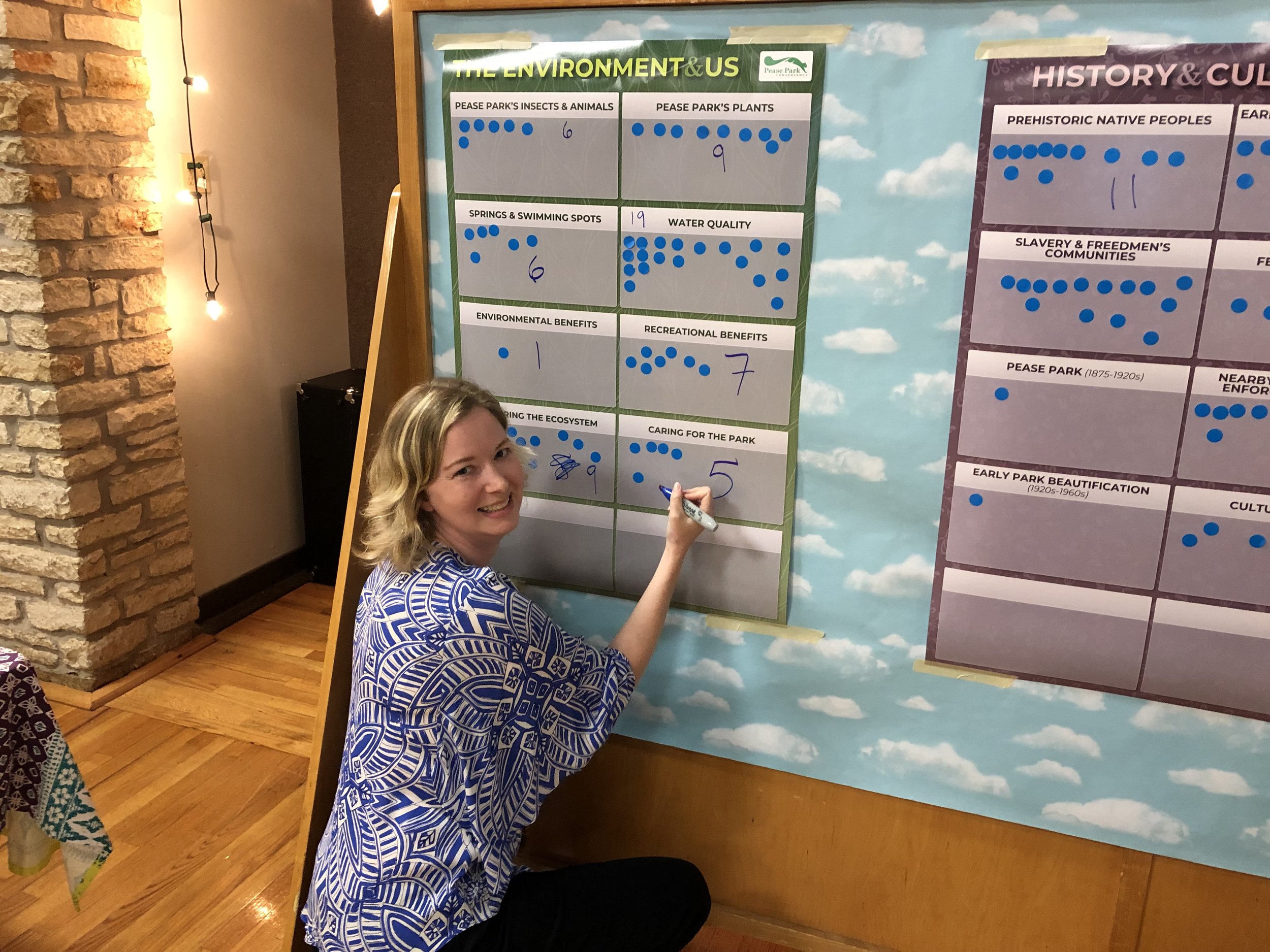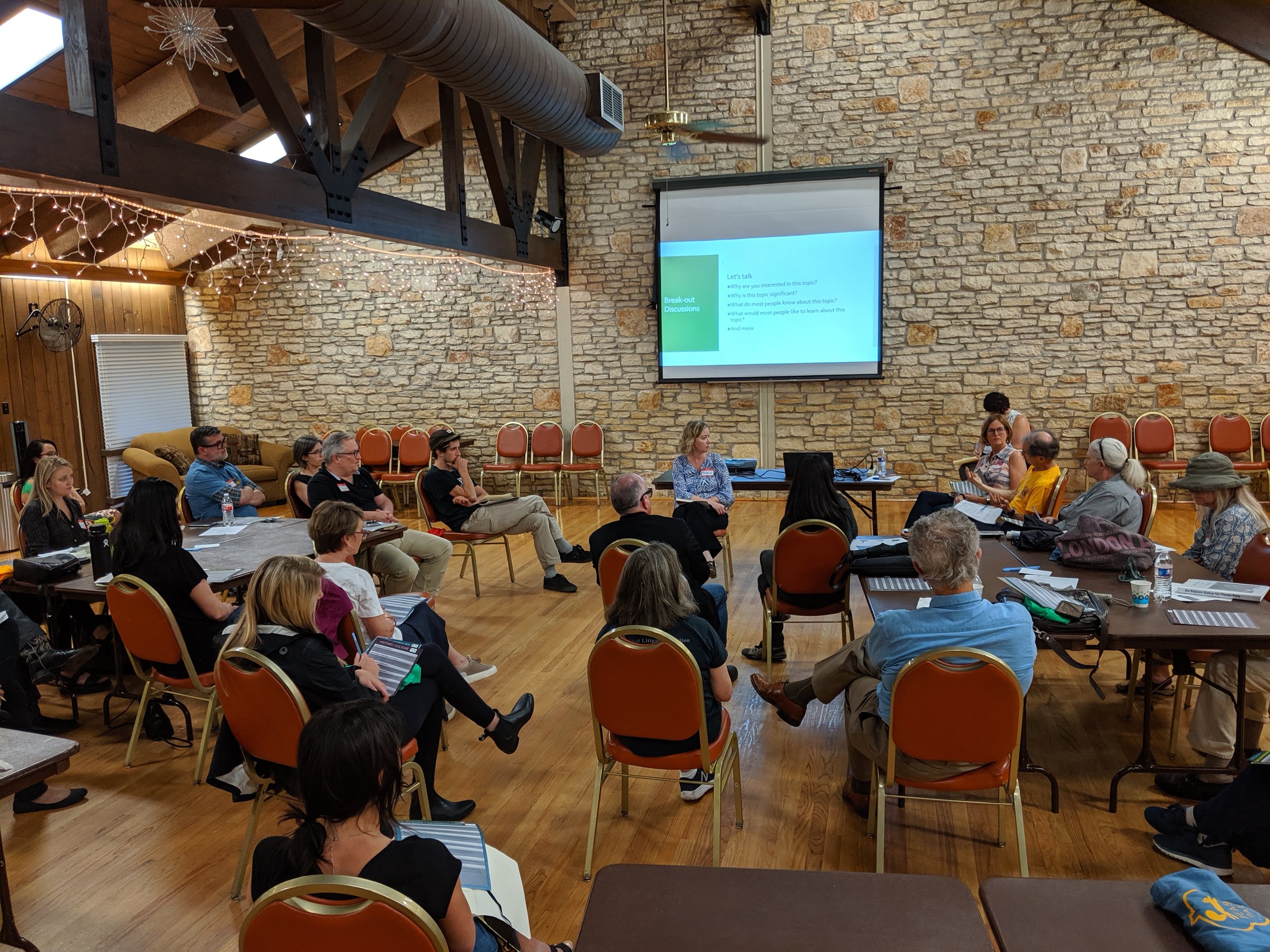In 2019, Pease Park Conservancy worked in partnership with PARD and specialists from MuseWork and RECLAIM to create the Pease Park Interpretive Plan. The plan provides a framework for interpretation in the park for the next five years.
What is an interpretive plan?
An interpretive plan is a strategic document intended to guide an organization or a park in how they tell the story of a space. It is the initial step in the planning and design process for informal learning-based institutions like museums, science centers, nature centers, parks and other cultural facilities where interpretation is used to communicate messages, stories, information and experiences. Our plan explores the meanings and implications behind the cultural, historical, and geological history of the park and the impacts we have or can have on the park and also the environment. In general, interpretive plans also offer guidance on programming, educational opportunities and informal ways to engage visitors with the deeper interpretation of a space.
Identified Themes for the Pease Park Interpretive Plan
Theme One
Pease Park is a place that reveals the wonders of the natural world and the intersections and tensions of our evolving place within it.
Theme Two
Pease Park is emblematic of racial and economic injustice in Austin and presents a unique opportunity to acknowledge our history of slavery, segregation, and exclusion in order to create a public space that is welcoming and accessible to all.
Theme Three
Pease Park is a natural treasure that belongs to us all, and caring for it is part of our heritage.
Tune in to our Interpretive Plan Interview Series!
We wanted to introduce our interpretive plan to park users and Austinites through a four-part Q&A video series that explores the overall concept of an interpretive plan, along with each of the three themes identified in the plan. Each episode features Pease Park Conservancy COO Chuck Smith, and specialists from MuseWork, Erin McClelland and Angela Davis, and RECLAIM founder Stephanie Lang.
Part One: Intro to Interpretive Planning
Part Two: Exploring Theme One
Part Three: Exploring Theme Two
Part Four: Exploring Theme Three
Bonus Episode: PARD Talks Interpretive Planning
The Interpretive Planning Process
Angela Davis of MuseWork
The interpretive planning process began in January of 2019, when PPC brought on Erin McClelland Museum Services (now MuseWork). The planning team undertook a community engagement process, gathering public input on which interpretive themes and stories resonated most with the public, as well as how the themes and stories should be framed. The planning team facilitated a community input session at the Lamar Senior Activity Center.
Given the particularly sensitive African American history of Woodlawn, (the historic name of the Pease estate where enslaved people lived and worked, and where some of the land was donated to become the foundation for Pease Park), we wanted to make a concerted effort to connect with the city’s African American community. The planning team partnered with Stephanie Lang (founder of RECLAIM, which uncovers and reclaims the stories of the black diaspora) to engage with this segment of the Austin community and gather input on which interpretive themes and stories they find most compelling, how those stories should be framed, and how Pease Park can be made to feel more welcoming to African Americans. The planning team and Stephanie Lang also conducted one focus group meeting with representatives from the African American community at Sweet Home Missionary Baptist Church in the Clarksville neighborhood.
Public Input Meeting at Lamar Senior Activity Center (2874 Shoal Crest Avenue; across the street from Pease Park)
Additionally, the planning team held multiple meetings with PPC and PARD to solicit input on goals, themes, story lines, and interpretive methods throughout the course of the project.
After receiving input from the community, experts, historians, and stakeholders MuseWork began to identify and expand on the major themes of the plan and how Pease Park Conservancy might interpret these themes. Within the interpretive master plan MuseWork provided a set of recommendations for how the Conservancy might convey these important historical and environmental themes to park-goers whether through wayfinding, signage, programming, walking tours, art or a variety of other means.



